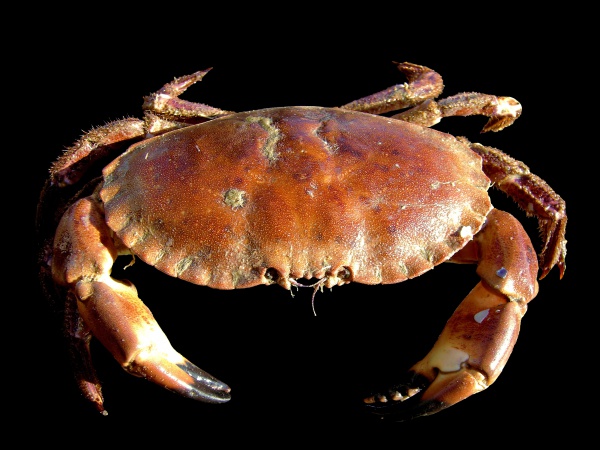Facts About Cancer pagurus
The Cancer pagurus, commonly known as the edible crab or brown crab, is a familiar presence in the North Sea, the North Atlantic Ocean, and possibly even the Mediterranean Sea. This robust crab is easily identifiable by its reddish-brown color, oval-shaped shell with a characteristic "pie crust" edge, and black-tipped claws. Adult crabs can grow their carapaces up to 25 cm wide and weigh as much as 3 kg. As nocturnal predators, they feed on a variety of mollusks and crustaceans. In Western Europe, particularly around the British Isles, these crabs are a significant catch, with over 60,000 tonnes harvested annually.
The Cancer pagurus has a fascinating life cycle and ecology. They reproduce during the winter months, with females carrying fertilized eggs for up to eight months. The larvae pass through several developmental stages before settling on the seabed. Adult crabs inhabit the northeastern Atlantic, ranging from Norway to North Africa, living in various seabed environments at depths of up to 100 meters. True to their nocturnal nature, they hunt crustaceans and mollusks under the cover of darkness. However, they face threats from various parasites and diseases, including viruses, bacteria, and dinoflagellates.
Economically, Cancer pagurus is vital in Western Europe. Fishermen primarily use crab pots to capture them, and there are stringent regulations in place to ensure the fishery's sustainability. These rules include minimum landing sizes and protections for egg-bearing females. The crab is a favorite in many culinary dishes, valued for both its white and brown meat.
Taxonomically, Cancer pagurus was first described by Carl Linnaeus in 1758 and serves as the type species for the genus Cancer.

 Spain
Spain